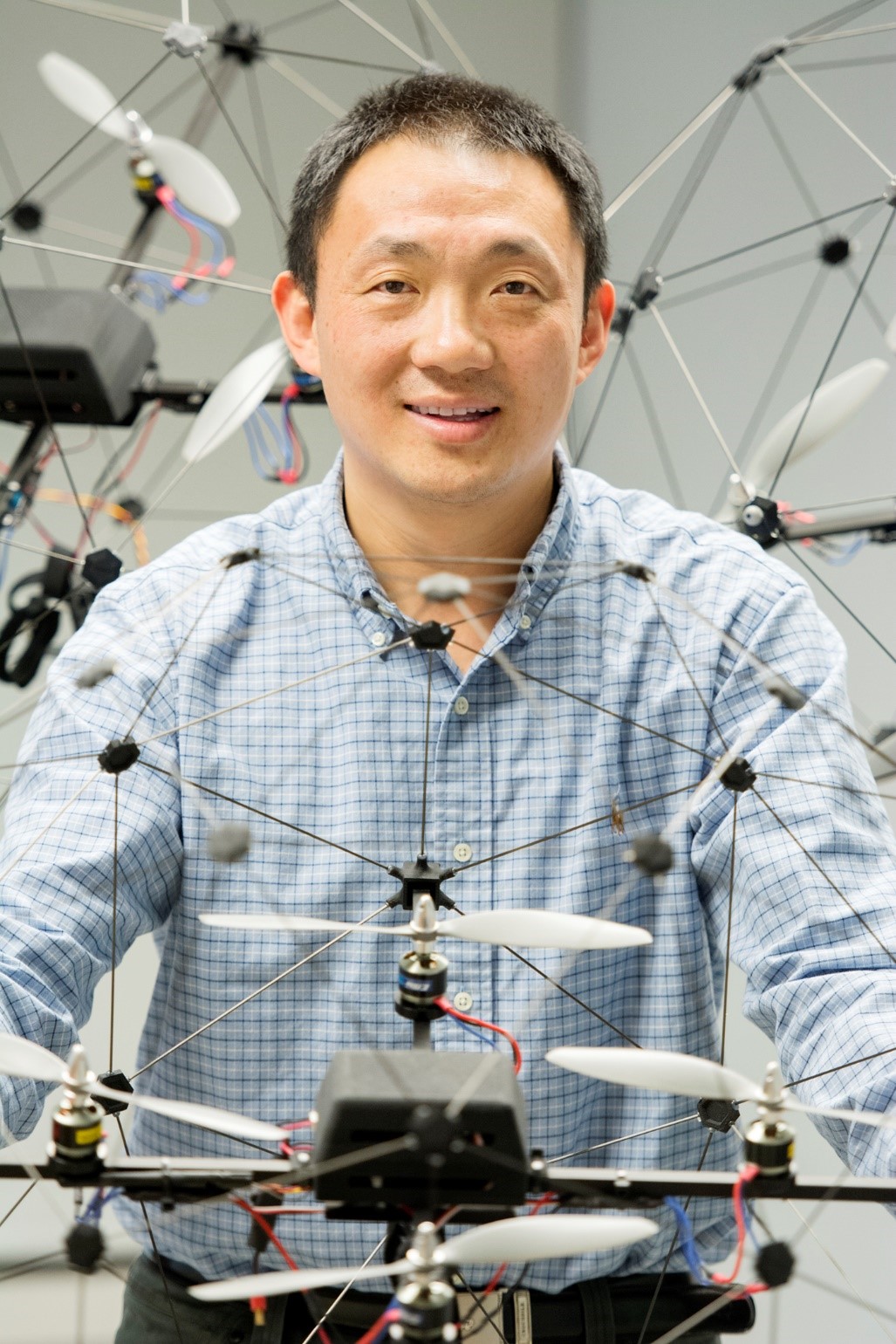报告题目:Self-Triggered Adaptive Model Predictive Control for Constrained Nonlinear Systems
报告时间:2022年8月12日(周五)10:00
报告地点:腾讯会议 ID:337-154-722
主持人: 任肖强 教授
报告人:Yang Shi, Professor, Fellow of EIC, IEEE, ASME,University of Victoria, Canada
报告人简介/Abstract:
 Yang SHI received his B.Sc. and Ph.D. degrees in mechanical engineering and automatic control from Northwestern Polytechnical University, Xi’an, China, in 1994 and 1998, respectively, and the Ph.D. degree in electrical and computer engineering from the University of Alberta, Edmonton, AB, Canada, in 2005. From 2005 to 2009, he was an Assistant Professor and Associate Professor in the Department of Mechanical Engineering, University of Saskatchewan, Saskatoon, SK, Canada. In 2009, he joined the University of Victoria, and now he is a Professor in the Department of Mechanical Engineering, University of Victoria, Victoria, BC, Canada. His current research interests include networked and distributed systems, model predictive control (MPC), cyber-physical systems (CPS), robotics and mechatronics, navigation and control of autonomous systems (AUV and UAV), and energy system applications.
Yang SHI received his B.Sc. and Ph.D. degrees in mechanical engineering and automatic control from Northwestern Polytechnical University, Xi’an, China, in 1994 and 1998, respectively, and the Ph.D. degree in electrical and computer engineering from the University of Alberta, Edmonton, AB, Canada, in 2005. From 2005 to 2009, he was an Assistant Professor and Associate Professor in the Department of Mechanical Engineering, University of Saskatchewan, Saskatoon, SK, Canada. In 2009, he joined the University of Victoria, and now he is a Professor in the Department of Mechanical Engineering, University of Victoria, Victoria, BC, Canada. His current research interests include networked and distributed systems, model predictive control (MPC), cyber-physical systems (CPS), robotics and mechatronics, navigation and control of autonomous systems (AUV and UAV), and energy system applications.
Dr. Shi received the University of Saskatchewan Student Union Teaching Excellence Award in 2007, and the Faculty of Engineering Teaching Excellence Award in 2012 at the University of Victoria (UVic). He is the recipient of the JSPS Invitation Fellowship (short-term) in 2013, the UVic Craigdarroch Silver Medal for Excellence in Research in 2015, the 2017 IEEE Transactions on Fuzzy Systems Outstanding Paper Award, the Humboldt Research Fellowship for Experienced Researchers in 2018. He is a member of the IEEE IES Administrative Committee and the IES Fellow Evaluation Committee during 2017-2019; he is the VP of IEEE IES Technical Committee on Industrial Cyber-Physical Systems. Currently, he is Co-Editor-in-Chief for IEEE Transactions on Industrial Electronics; he also serves as Associate Editor for Automatica, IEEE Transactions on Automatic Control, IEEE Transactions on Cybernetics, etc. He is General Chair of the 2019 International Symposium on Industrial Electronics (ISIE) and the 2021 International Conference on Industrial Cyber-Physical Systems (ICPS).
He is a Fellow of IEEE, ASME, CSME, and Engineering Institute of Canada (EIC), and a registered Professional Engineer in British Columbia, Canada.
施阳博士, 1998年于西北工业大学获得博士学位;2005年于加拿大阿尔伯塔大学获得电子与计算机工程博士学位。2005-2009在加拿大萨斯喀彻温大学任助理教授及副教授;目前为加拿大维多利亚大学机械工程系终身教授。 施阳博士的研究集中于工业信息物理系统、网络及分布式控制系统、模型预测控制、机电系统及机器人系统设计与控制、能源系统的优化调度与控制等。
他2007获得加拿大萨斯喀彻温大学十佳教学奖;2012年获得维多利亚大学工学院最佳教学奖。2015年获得维多利亚大学年度唯一的最佳研究银奖(Craigdarroch Silver Medal);2013年获得日本学术振兴会特邀访问教授奖;2017年获得德国洪堡研究基金。他与学生合著的论文获得2017年IEEE Transactions on Fuzzy Systems年度最佳论文奖。目前任IEEE工业电子学会工业信息物理系统技术委员会主席,担任IEEE Transactions on Industrial Electronics的共同主编(Co-Editor-in-Chief),任多家国际期刊的副编辑,包括:Automatica, IEEE Transactions on Automatic Control, IEEE Transactions on Cybernetics等。
施阳教授是加拿大工程研究院Fellow (Fellow of Engineering Institute of Canada),是IEEE Fellow(国际电子电器工程师协会), ASME Fellow(美国机械工程师协会)和CSME Fellow(加拿大机械工程师协会)。
报告摘要/Biography:
Model predictive control (MPC) is a promising paradigm for high-performance and cost-effective control of complex dynamic systems. Yet, the MPC schemes and the corresponding optimization problem closely rely on the model of the dynamic system under consideration. In real applications, the mathematical model is hard to be precisely known or even varying. This talk will introduce a self-triggered adaptive model predictive control (MPC) method for constrained discrete-time nonlinear systems subject to parametric uncertainties and additive disturbances. Firstly, a real-time zonotope-based set-membership parameter estimator is developed to refine a set-valued description of the time-varying parametric uncertainty based on the available measurements. We leverage this estimation scheme to design a novel self-triggered adaptive MPC (ST-AMPC) approach for uncertain nonlinear systems. Compared with the existing self-triggered robust MPC methods, the proposed ST-AMPC method can further reduce the average sampling frequency while preserving comparable closed-loop performance. Then, we theoretically show that, under some reasonable assumptions, the proposed ST-AMPC algorithm is recursively feasible, and the closed-loop system is input-to-state practical stable (ISpS) at triggering time instants. Finally, some existing challenges and future research directions will be discussed.